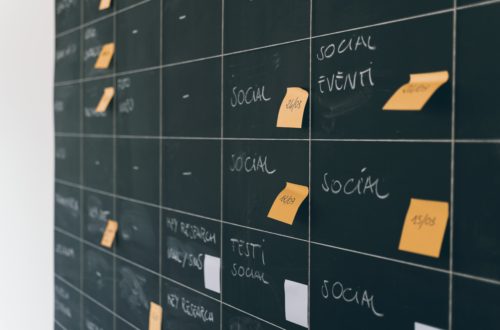
What I Do For My Lesson Planning: ESL Push-in.

Lesson plans can be a tedious job, but it all can be simplified if you know what to focus on and have some resources at hand to make the writing of the lesson plans smooth sailing.
As an ESL push-in teacher, I am supposed to communicate with the content area teacher to know what will be covered on a specific day. Ideally, plans are available and are shared with you, but this is not always the case. That’s the reality.
How lesson planning starts for an ESL push-in teacher.
In the situation when the plans are available, the only thing I need to know is the lesson’s content objective. Based on the content objective, I vaguely can draft my language objective.
Later, during the lesson, I fix my language objective and make it more specific, taking into account the resources the teacher is using and the tasks the students need to accomplish.
As I come into the classroom, I look at the board where the content
I also take into account what language the students would need to manipulate to achieve their content objective: the specific vocabulary of the lesson, certain sentence structures.
Then I shoose the strategies I am going to use to help my students reach their content objectives. At this point, I have all the information I need to write my lesson plan:

a) Content objective (provided by the content area teacher)
b) Lesson-specific vocabulary (most of the time, I select it)
c) Types of a task in one of 4 areas (writing, reading, listening, speaking)
d) Strategies I need to help my students reach content objectives.
The resources I use for ESL push-in lesson planning.
There are 2 resources that I use to help me with writing my lesson plan.
Resources #1: Language objective sentence frame.
Language objective sentence frame helps with writing the objective really fast.
Resource #2: A list of strategies

For strategies, I use a fantastic resource that gives me a list of to-go strategies that have a specific purpose:
- Focus on academic language, literacy, and vocabulary
- Link background knowledge and culture to learning
- Increase comprehensible input and language output
- Promote classroom interaction
- Stimulate higher order thinking and the use of learning strategies
The list of strategies provides an idea of activities I can offer to my students for them to reach the content objective of the lesson.
Example.
In Social Studies 7th grade students’ objective is to complete a graphic organizer after reading a number of articles related to the Roman legacy by creating a summary of the Roman legacy in the areas of Architecture, Art, Sport, etc. and the influence of the Roman heritage on the modern-day society.
Based on the information I have, the language objective is the following:
SWBAT summarize a Roman legacy in one of the areas and explain in writing how it affects the modern-day society by using important concept words* from each legacy description ( while reading) and using 2 sentence frames:
1) Some of the major legacies of the Roman Empire in the area of ________ are _____________ that ____________ and ________ that _________.
2) The influence of the Roman legacy on the modern day world is reflected in ____________________ .
*5-6 Vocabulary words can be selected in advance if I have access to the resource of the lesson. If not, I choose vocabulary words as we read the articles with my students.
Out of 4 areas of language development (Speaking, Reading, Writing, Listening) the language objective targets Writing, that’s why the language objective contains the mentioning of “in
In this particular class, the levels of my students range from ELP 1 to ELP 3. The activity focuses on reading the articles, writing the summary and explaining the legacy; therefore, I will use some to-go strategies from The To – Go Strategies Matrix for Levels 1-3 for the areas of Reading and Writing:
Downloads.
The “To-Go Strategies Matrix”, the list of additional strategies that target 5 principles, and the description of strategies can be found here.
Check out these articles on the topic of ESL teaching:
5 Things I Have Learned as an ESL Push-in Model Teacher That I’m Taking into the Next School Year.
How To Become an Irreplaceable Teacher in Your School.
5 Things an ESL Push-in Teacher Should Consider Doing Differently or Start Doing.
5 Things an ESL Push-in Teacher Should Consider Doing Differently or Start Doing.
How NOT To Create Dependent ESL Learners.
How “WIDA Can-Do Charts” Help Me Plan and DifferentiateInstruction for English Language Learners?
ESL Push-In: What To Focus On.



